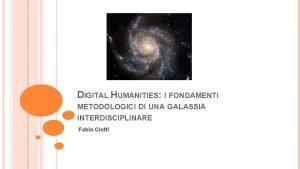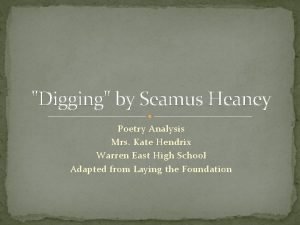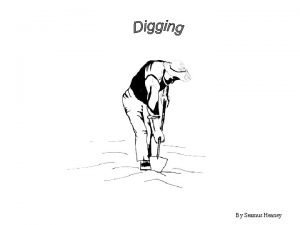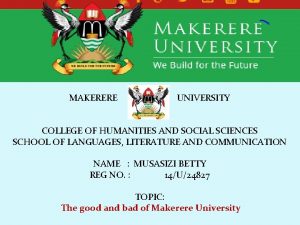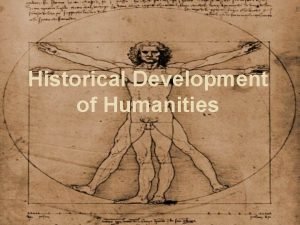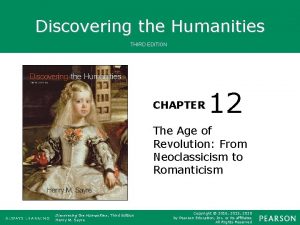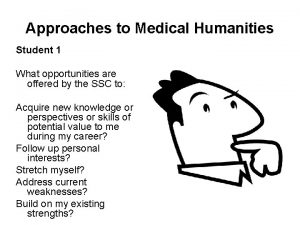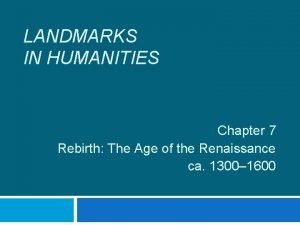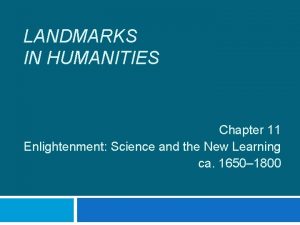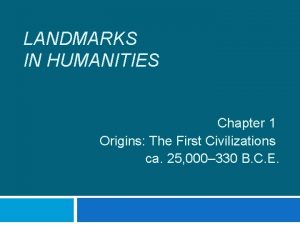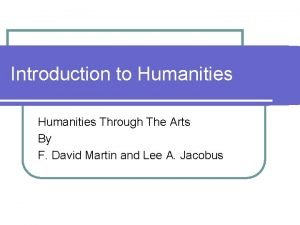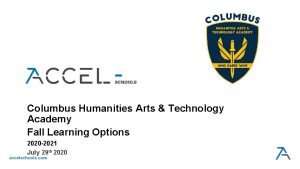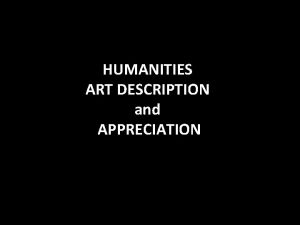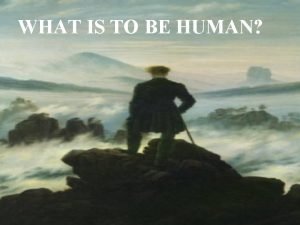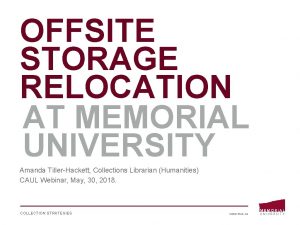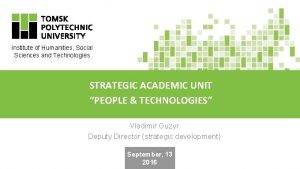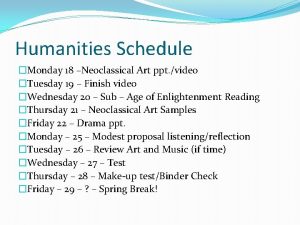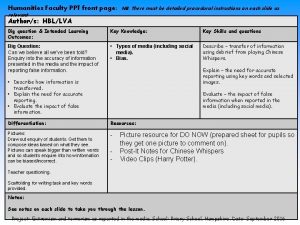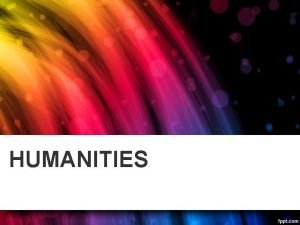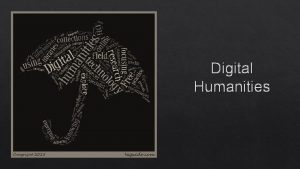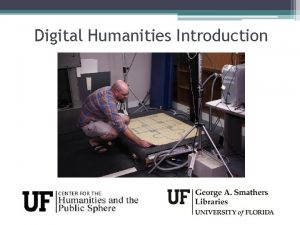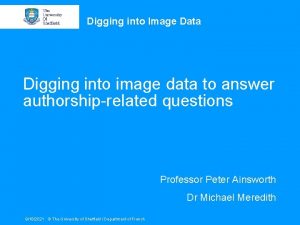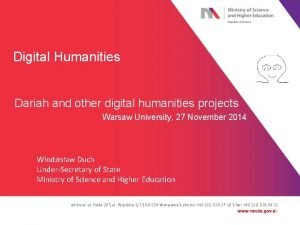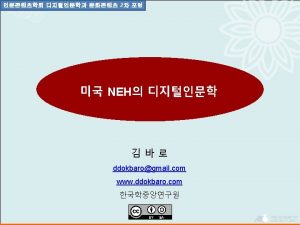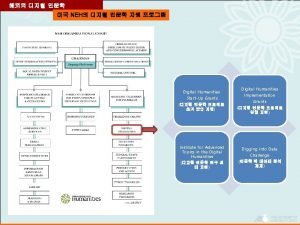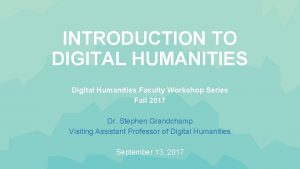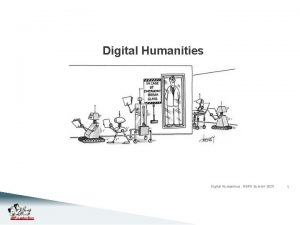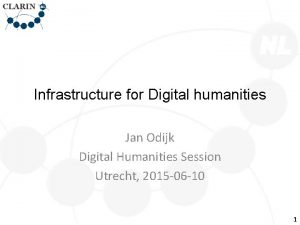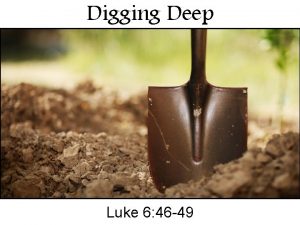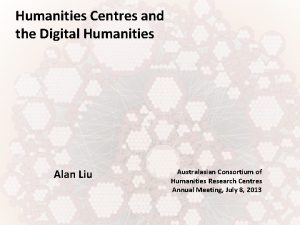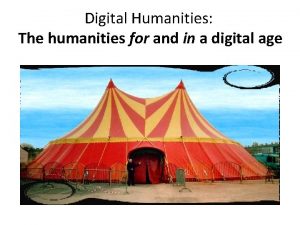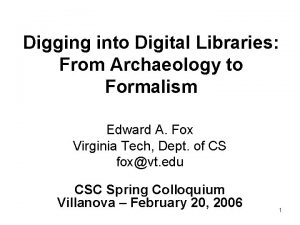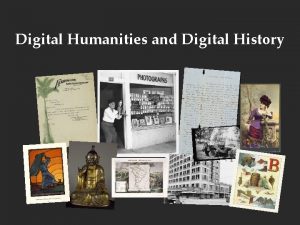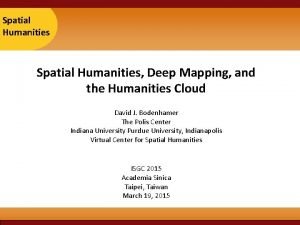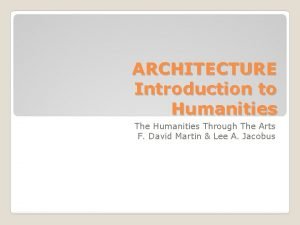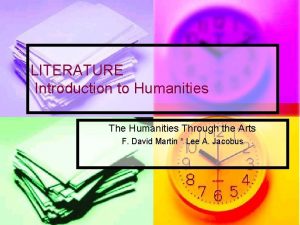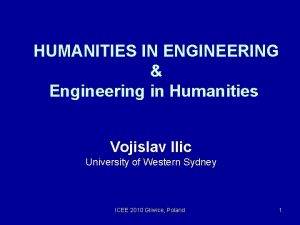Digging into the Digital Humanities A Guide for
































- Slides: 32

Digging into the Digital Humanities: A Guide for Evaluating DH Projects Caroline Fuchs University Libraries CTL Summer Technology Exploration June 19, 2014

First things first – Defining the digital humanities • Hands-on project based scholarship • Applying technology to research & scholarship • More than repository building and editing

It is also • • • Collaborative Project-based scholarship Exploratory Trans-disciplinary/interdisciplinary Computationally engaged

“Digital Humanities is less a unified field than an array of convergent practices that explore a universe in which print is no longer the primary medium in which knowledge is produced and disseminated. ” from "A Short Guide to the Digital Humanities" p. SG 2

Blurring the lines • • • Humanities Social sciences The arts Natural sciences Technology

In the “print plus” era research is: • • • No longer linear Fluid Faceting Filtering Multiple pathways Process rather than product

Incorporating • Statistical processing (computational linguistics) • Linking (hypertext) • Modeling (architectural and visual displays) • Structured data (XML) • Iterative editing and version control (critical editions, analysis, creative practices) "A Short Guide to the Digital Humanities" p. SG 3

Teaching & Learning • • To learn by making and doing Becoming part of the research community Actively engaging in scholarly communication Sharing knowledge, skills, expertise

Getting involved • • • Create Use Access Navigate Evaluate

So how do we evaluate a digital humanities project?

At the heart • Peer review (impact, intended audience, originality, and excellence) • Original scholarship • Intellectual rigor

Peer review groups for DH projects • NINES (Nineteenth-century Scholarship Online) • 18 th. Connect (Eighteenth-century Scholarship Online) • MLA Committee on Scholarly Editions

Then what’s different? • The media/technology in which the content is realized • Must evaluate the “work” as well as its “environment” • Assess the content and the delivery

Not just about new content – but new ways of engaging with the content A “good” digitial humanities project will allow the student/researcher to interact with the content (i. e. data)

Must also take into account • • • Platform Interface Performance Data structures Back-end database The Code

To begin • Evaluate the work in the medium in which it was produced and published • For websites: authors should include system requirements for optimal use • For virtual simulations: required hardware should be noted and made available

What else to look for • • • Authors/creators Their roles Grants/funding Partnerships Citations Status of the project (i. e. beta, in progress, final, etc)

Ask • How does this DH project advance or contribute to scholarship in the field(s)? • Does it transform the learning environment? • How is this project in “dialogue” with others in the field? • Is it field-specific or trans-disciplinary? • Is it a true “print plus” project, or simply a digitized analog project?

Research questions & digital media • What is being done with this project that could not be done in print-based scholarship? • Is it transformative? Putting something online is not enough – the data must be “usable”

Also consider • How does the “tool” and the “content” interact? • Does the project have a thesis or guiding principle? • Is the content digitized? Born digital? Both? • Is the project transdisciplinary/interdisciplinary?

Sharing • What are the licensing agreements? • Are there intellectual property rights restrictions? • Can content be re-used/re-purposed? • How accessible is the project? • Is it fee-based or free?

Structure & responsibility • Is the interface “user friendly” or “intuitive”? • Does it make sense for the content? • Are collaborators and their roles clearly listed and defined? • Are collaborators’ contributions and expertise clearly articulated? • Are funding sources disclosed?

Don’t forget usability • Is the information appropriately organized? • Is it easy to navigate? • Does the project make use of standards in web design? In metadata? In encoding? • Is the site interoperable with others? • Is the design aesthetically pleasing?

And the nitty-gritty • Where does the data “live”? • Is the project “open source? Is it “proprietary”? • Does the project allow for sharing (or development) of code, tools, applications, etc? • Is it an on-going project or is it complete? • Does the site address digital preservation?

In summary • Evaluate the project in the medium in which it was produced & published • Are roles clearly stated? At each phase? • What is the nature of the newly created “knowledge”? • Does it allow more interaction than its print or analog counterpart?

Remember • In digital scholarship, new “knowledge” is not just content • It is new ways of: – Organizing – Classifying – Interacting This makes web design & coding very important!

Multiple applications • Can be used for research, teaching, service • But ask: – “How has this project transformed the learning environment? ” – “What contributions has the project made to teaching? ” – “How can these contributions be assessed? ”

Peer review • Has the project been peer reviewed? • Has it resulted in a peer-reviewed publication or presentation? • Has it won a prize from a professional organization? • What funding grants has it received?

Digital humanities projects and the bigger picture • Think about critical ethical issues of: – The nature and value of cultural preservation – Public history – Participatory culture – Open access – Digital diversity – Collection curation

Digital Humanities evaluation checklist • • • Is the project easy to navigate and use? Is the purpose clearly articulated? Is it aesthetically pleasing? What is being done with this project that could not be done in print-based scholarship? Who are the authors/contributors? Their roles? Is it a collaborative project? Who is the primary audience? What contribution does it make to scholarship? What are the strengths? What are the weaknesses?

To learn more about digital humanities • Visit our guide http: //campusguides. stjohns. edu/dh • Get involved at SJU http: //stjdh. wordpress. com/ • Publications, blogs, journals, etc http: //campusguides. stjohns. edu/dhpublications Contact: Caroline Fuchs University Libraries fuchsc@stjohns. edu

Bibliography 1. “The Short Guide to the Digital_Humanities, ” an open pdf excerpt from Digital_Humanities, by Anne Burdick, Joahanna Drucker, Peter Lunenfeld, Todd Presner, Jeffrey Schnapp, MIT Press, 2012, pp 121 -136
 Digital humanities
Digital humanities Publik sektor
Publik sektor Digging poem analysis
Digging poem analysis Between my finger and my thumb
Between my finger and my thumb Anatomical movements in volleyball
Anatomical movements in volleyball Vietnam war at home webquest answers
Vietnam war at home webquest answers College of humanities and social sciences
College of humanities and social sciences What is the historical development of humanities
What is the historical development of humanities Benjamin latrobe
Benjamin latrobe What is medical humanities
What is medical humanities Landmarks in humanities
Landmarks in humanities Landmarks in humanities 4th edition
Landmarks in humanities 4th edition Landmark in humanities 5th edition
Landmark in humanities 5th edition Humanities through the arts
Humanities through the arts Hum 1 arts appreciation house rules
Hum 1 arts appreciation house rules Charles university faculty of humanities
Charles university faculty of humanities Columbus humanities arts and technology academy
Columbus humanities arts and technology academy Art and humanities endorsement
Art and humanities endorsement Humanities art appreciation
Humanities art appreciation B'faculty of humanities agh', b'poland'
B'faculty of humanities agh', b'poland' Human flourishing definition
Human flourishing definition What is humanities
What is humanities Essay about humanities
Essay about humanities Ca humanities
Ca humanities Ihsst
Ihsst Humanities art appreciation ppt
Humanities art appreciation ppt Introduction to humanities ppt
Introduction to humanities ppt Functions of art
Functions of art Arts and humanities endorsement
Arts and humanities endorsement Fspos
Fspos Typiska drag för en novell
Typiska drag för en novell Nationell inriktning för artificiell intelligens
Nationell inriktning för artificiell intelligens Vad står k.r.å.k.a.n för
Vad står k.r.å.k.a.n för
